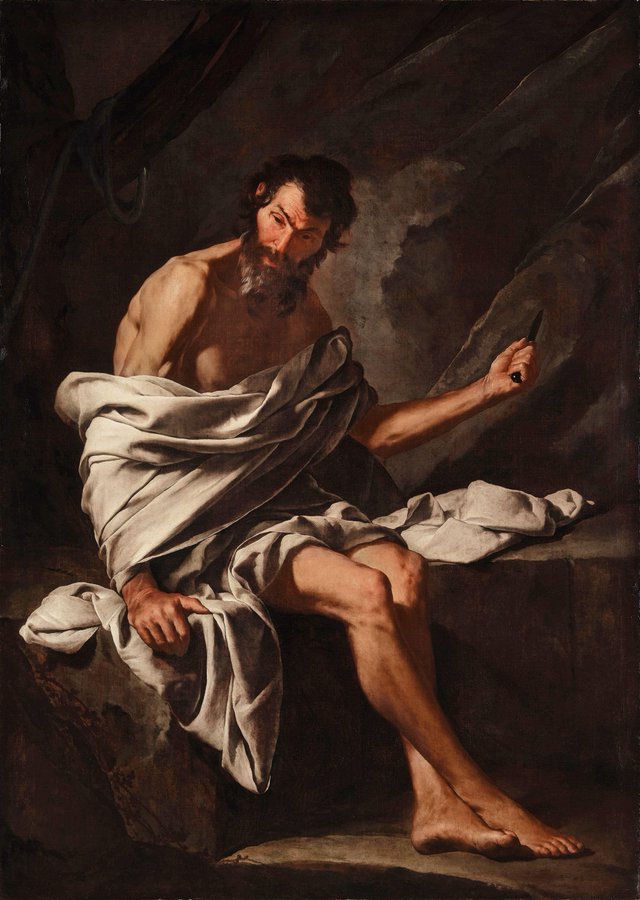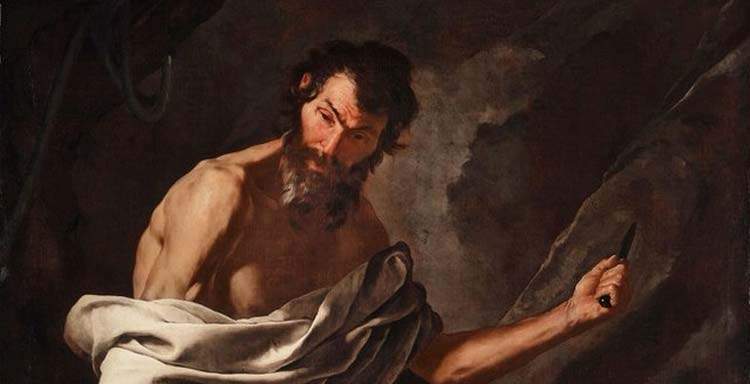The National Gallery in London has announced the acquisition of an important painting by Bernardo Cavallino (Naples, 1616 - 1656), one of the great masters of the Neapolitan seventeenth century: it is a St. Bartholomew, described by the London museum as “one of the largest and most splendid paintings ever painted by Cavallino.” The work dates from the 1740s, when “the Neapolitan artist was at the height of his artistic powers.” The painting was purchased by the museum at auction from Sotheby’s: the sale, Baroque. Masterpieces from the Fisch Davidson Collection was held in New York on January 26, and the St. Bartholomew cost the National Gallery $3.92 million, including auction fees (it started from an initial estimate of $2.5-3.5). The auction featured ten works belonging to collector Mark Fisch, a real estate tycoon, and his wife Rachel N. Davidson, who over the years have amassed an impressive collection of ancient art: works by Rubens, Guercino, Orazio Gentileschi, Giulio Cesare Procaccini, Valentin de Boulogne, and Georges de la Tour were up for auction.
Of the St. Bartholomew in question we know much of its history. It was inherited by Bernardo Cavallino’s son, Francesco, and upon the latter’s death in 1677 it ended up in the collection of Ignazio Provenzale, duke of Collecorvino, and then was inherited by his wife Giovanna. The painting reappeared on the market in 1903 at Christie’s, sold as a work by Ribera, and then again sold at Sotheby’s in 1988 as a work of the seventeenth-century Spanish school. It was then purchased by the Colnaghi gallery, which then sold it to Argentine collector Mauro Herlitzka, and by the latter it was finally sold to Fisch.

This is a “decidedly modern” work, as Christie’s catalog note states. “It focuses on the muscular figure of Saint Bartholomew, who wields a knife that foreshadows his martyrdom. The powerful intensity of the painting derives as much from its expressive darkness and dramatic composition as from the naturalistic depiction of the saint, rendered with virtuosic brushstrokes. Depicted slightly more life-size, St. Bartholomew, bearded and dark-haired, sits in a dark cave. The apostle is dramatically lit, with an effect that heightens the psychological intensity of his pose as he apparently ponders his impending death. [...] The remarkable play of light and shadow allows Cavallino to render both flesh and fabric with surprising naturalism: the saint’s muscular torso, sagging skin, and dirty feet contrast with the voluptuous gray cloak, also evocative of a shroud.”
We do not know the painting’s commissioners, yet the exceptional size of the work suggests that it was a particularly special undertaking. The subject can be traced to two 17th-century Neapolitan collections, as mentioned above. In 1677, “Uno Quadro di palmi otto, e sei con cornice indorata con l’imagine de S. Bartolomeo di mano di Ber.do Cavallino” appears in the posthumous inventory of the “magnificent” collection of Francesco Cavallino, the artist’s son. The painting later appears in the posthumous inventory of the regent of the Neapolitan royal chancery, Ignazio Provenzale, duke of Collecorvino, where it is described as “ S. Bartolomeo palmi 8, e 6 mano di Bernardo Cavallino cornice dorata.” Valued at 120 ducats, the St. Bartholomew was among the most valuable works in the large collection. And now it will appear among the major works of the Italian seventeenth century at the National Gallery in London.
 |
| London, National Gallery acquires important painting by Bernardo Cavallino |
Warning: the translation into English of the original Italian article was created using automatic tools. We undertake to review all articles, but we do not guarantee the total absence of inaccuracies in the translation due to the program. You can find the original by clicking on the ITA button. If you find any mistake,please contact us.